Alexandroupoli & the Turkish Border
This is my fifth post from the Adventures Abroad Via Egnatia tour led by our friend Victor Romagnoli in the late spring of 2023. The first four posts were from Turkiye including the last one from Edirne, which turned out to be a very interesting and untouristy place. As noted in the previous posts the Via Egnatia was a Roman road that led from the shores of the Adriatic in Greece to the city of Constantinople, now Istanbul. The theme of the tour was to follow in the footsteps of the many millions who would have taken this route as soldiers, pilgrims or merchants. The first place the road entered modern day Turkiye was at Adrianople, now Edirne. Going in reverse order in this post we’ll cross over into Greece heading for the city of Alexandroupoli and it won’t be as easy as it sounds. Read on to find out why.
If you look at a map you will see that Edirne is right on the border of Greece, separated by the Maritsa River as the Turks call it or the Evros as the Greeks call it. Technically that’s not correct as the river boundaries have changed over time and the river at Edirne is now actually all on the Turkish side, but for the most part of its length the river is the actual boundary. For reasons I’m still not clear on we did not avail ourselves of the Edirne crossing but instead drove south through some very pleasant rolling hills to the border near the town of Ipsala and almost where the river drains into the Aegean Sea. This is apparently one of the busiest border road crossings in Europe.
From the moment we approached the border I knew something was amiss as there were huge lineups of trucks and cars in multiple lanes that didn’t seem to be moving. This really didn’t concern us as we were leaving our Turkish bus and guide at this point and walking to the border crossing. Here we are saying goodby to our guide Cigdem with our driver Recgip in the background. The smiles would soon be wiped off our faces.
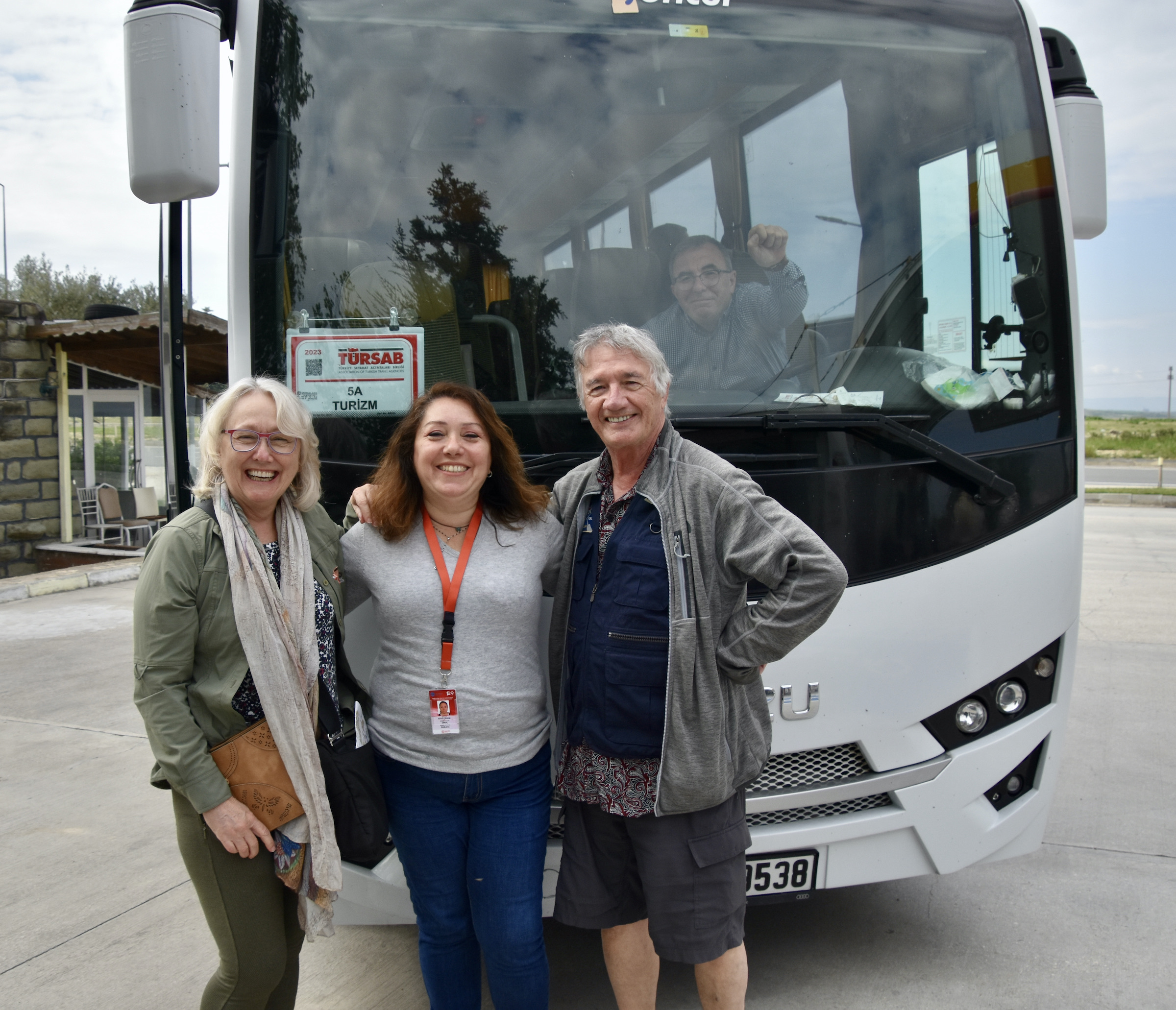
I have crossed many land borders on foot over the years including some that you might think would be problematic – Honduras/Guatemala where Victor had to tell the border agent demanding a bribe to politely f*** off and Namibia/Botswana for two, but I wasn’t prepared for what happened at the Turkiye/Greece crossing. While everyone is used to zooming across borders at breakneck speeds within the EU, the opposite was the case here. It’s no secret that the Greeks and Turks have a loathing for each other that goes back centuries. The 1923 Greek-Turkish population exchange involved over one and a half million people being forcibly relocated to the country of their faith – Muslims to Turkiye and Christians to Greece. My late brother-in-law was a Greek descendent of this exchange and even though he was an intelligent and educated man he still refused to visit the country of Turkiye because of events there almost a century earlier. If he felt this way in Canada, how much stronger must the antipathy be on the borderlands?
While it was clear that some incident was stopping vehicles from crossing over Victor did manage to convince the Turkish authorities to let us proceed on foot which we did through three different check points until coming to a final barrier at the edge of a bridge. I had assumed that we would cross the bridge on foot and get into a bus on the other side. Wrong. As we approached the bridge a guard with a machine gun blocked our way and made it clear we weren’t going anywhere. Victor then attempted to use his phone to see what could be done, but the Turks had blocked cell coverage in this area. After several fruitless returns to the last check point and when things seemed pretty bleak, a truck driver gestured to Victor that he had a phone that worked and Victor was able to communicate with our Greek driver who was waiting on the other side. I don’t know how he did it, but the Turks agreed to allow the bus to cross the bridge and pick us up which it did. Man was I happy to get on board and see the last barrier go up and the crossing begin. As it turns out the river mouth here is very large and the actual bridge was several kilometres long before reaching the Greek checkpoint and our entry back into the EU. I never did find out what was causing the problems that day, buy it no doubt has something to do with the illegal migrant crossings that are taking place in the Evros delta at an ever increasing pace.
We were now free to proceed to Alexandroupoli and appropriately our route is on the newly completed superhighway that traverses northern Greece, the Egnatia. Even though we were now in Greece a number of the small villages we passed had minarets and apparently still were largely Muslim. This was a bit surprising given the animosity towards the Turks that many Greeks harbour. However, the explanation was simple. These were Greeks who had become Muslims under Turkish rule and chose to stay as such after the Turks lost control of the area. I had seen lots of abandoned mosques in Greece on previous visits but this was the first time I had seen any active ones.
Alexandroupoli
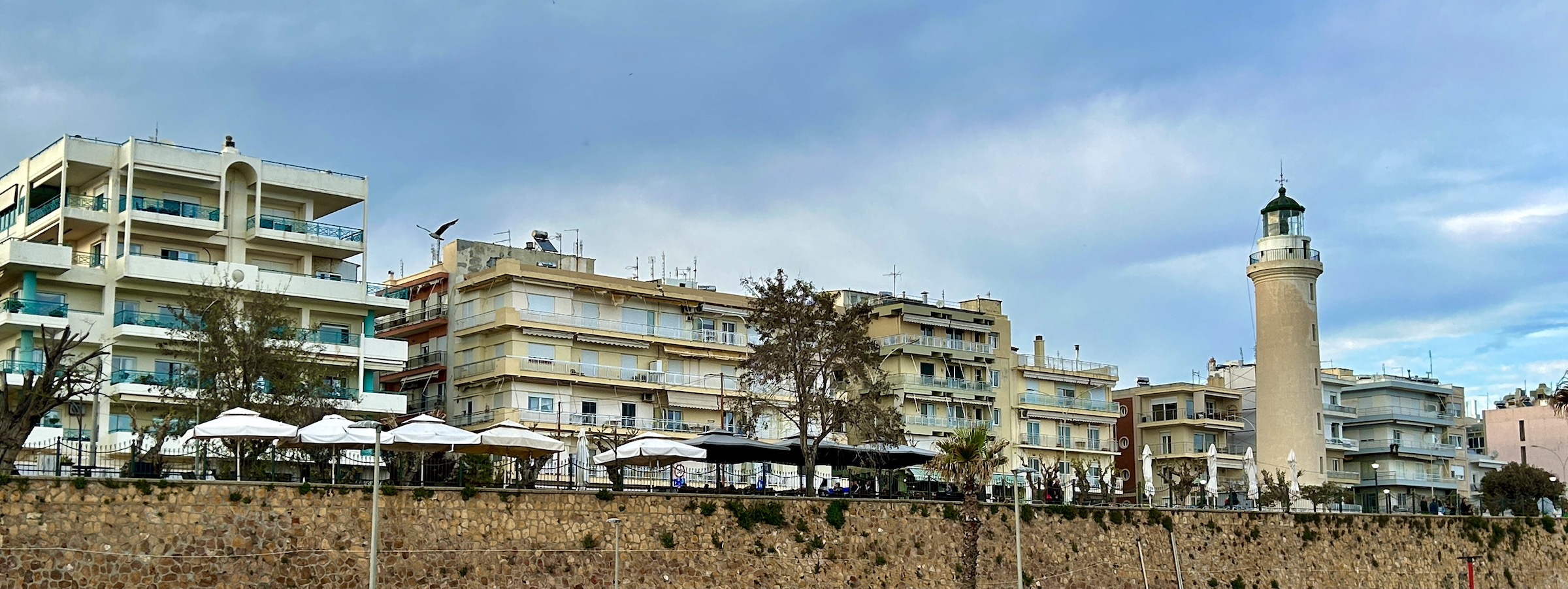
Despite its name which one would tend to associate with Alexander the Great, Alexandroupoli is a relatively new city, only founded in the 19th century by the Ottomans. However, it has packed a lot of history into the years since its beginning as a fishing village including numerous name changes. It was captured by the Russians in 1878 only to be returned to the Ottomans who then lost it for good to the Bulgarians in 1912. The Bulgarians then briefly lost it to the Greeks during the Second Balkan War, but got it back just in time to lose it again for being on the wrong side of WWI. The Treaty of Lausanne ceded it to Greece in 1923 and the name comes from King Alexander the not-so-great who died in 1920 after being bitten by a pet monkey. However, the Bulgarians were not done yet. In 1941 they occupied it again as allies of Nazi Germany. During the three years they held the city almost the entire Jewish population was shipped to the death camps with only four surviving the war. Today it is the largest city in Grecian Thrace and a major port as well as being the gateway to the Evros Delta which we’ll visit in the next post. Currently the United States is building a huge naval base here partially I presume to offset the increasingly chilly relationship with Turkiye.
Again in keeping with the theme of this tour, Alexandroupoli is the site of the annual Via Egantia Run, a half-marathon that takes place over the course of the ancient highway.
Our accommodation in Alexandroupoli was at the Lighthouse Hotel which not surprisingly has great views of the city’s most notable monument, the lighthouse. It has this mural in the lobby which features not only the lighthouse but the Winged Victory of Samothrace which is one of the most famous statues in the Louvre. Samothrace lies about 78 kms. off the coast and is served with regular ferry service from Alexandroupoli.
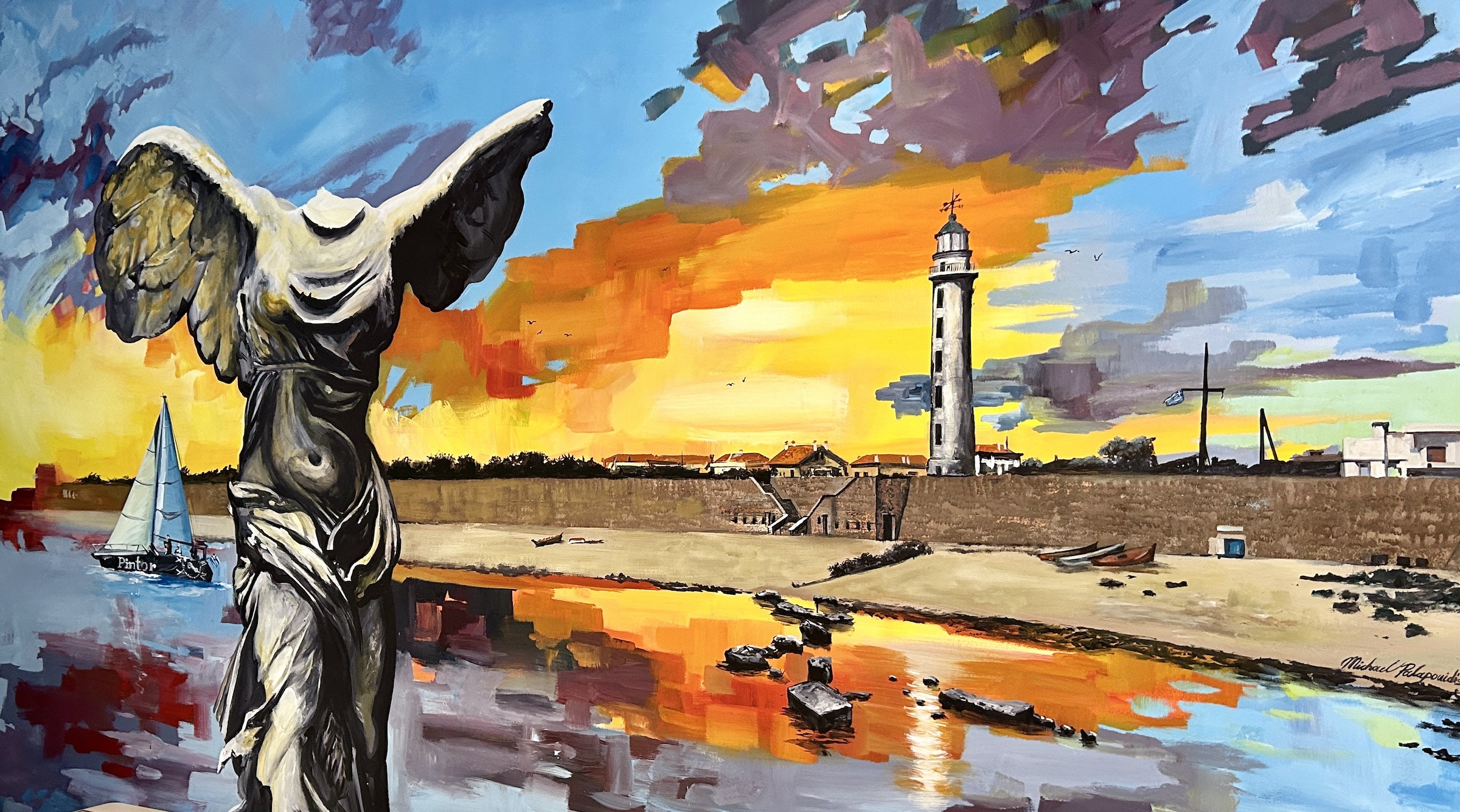
Before meeting for dinner Alison and I had the chance to visit the lighthouse of Alexandroupoli which is quite impressive, but a far cry from the once Seven Wonder of the World in a city that Alexander the Great did found, Alexandria, Egypt.
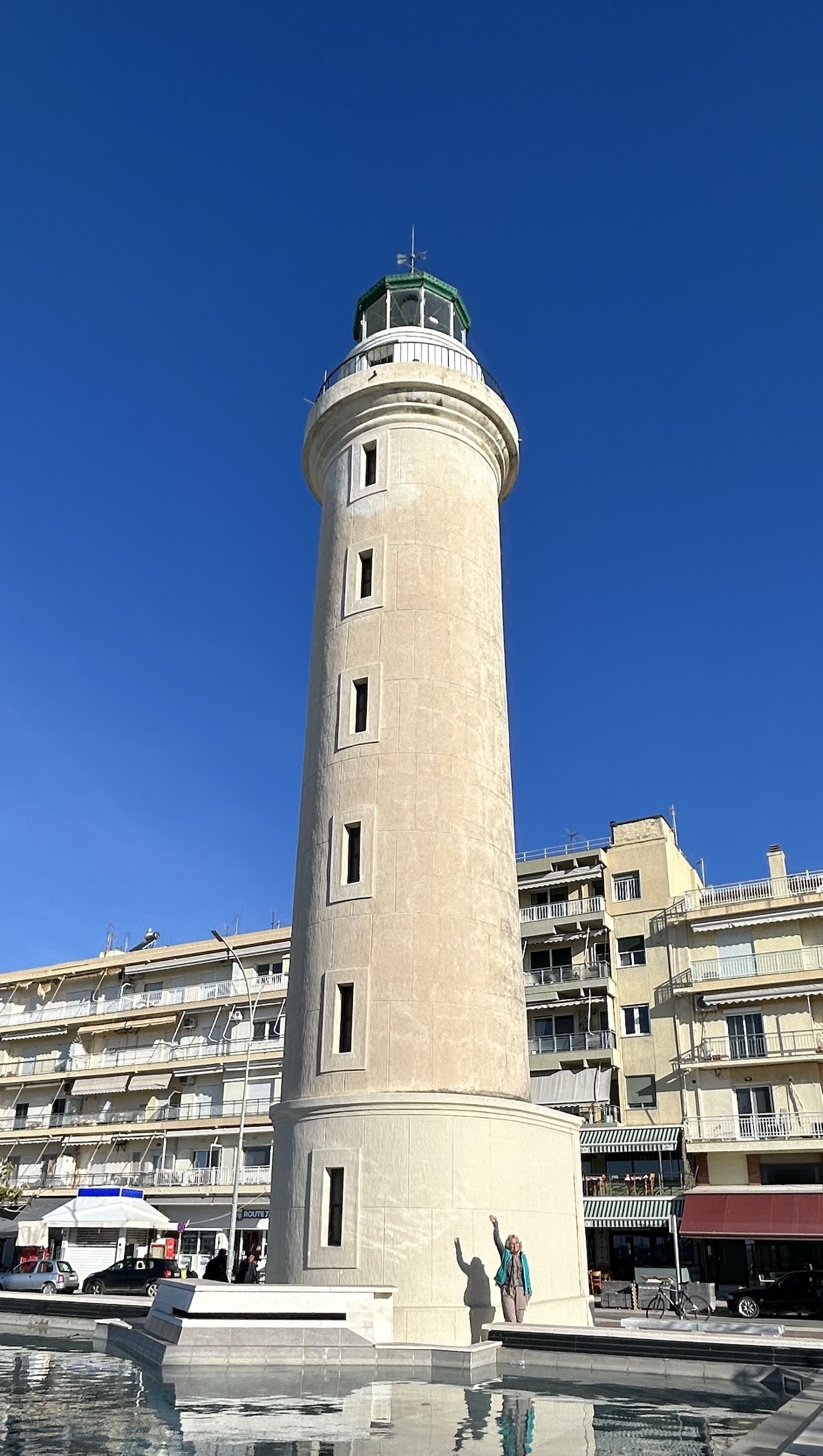
The curved beach of Alexandroupoli was virtually deserted.
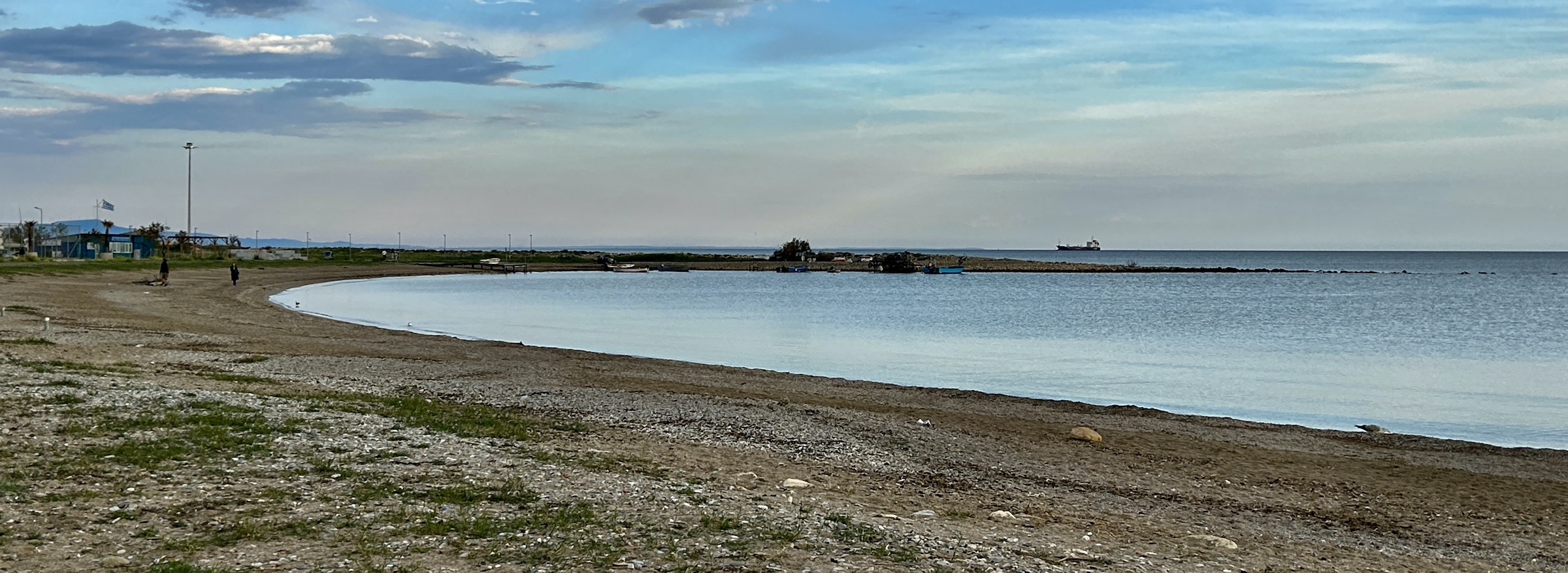
There are a number of interesting monuments along the waterfront including two that feature a famous Greek admiral in the War of Independence who also happened to be a woman, Domna Vizvivi. Here she is with her dying husband Antonis whose main claim to fame was getting himself killed so that Domna could take over the ship and fight the Turks until the end of the war. The thanks she got for expending her family’s fortune and risking her life was to live in poverty for the next 25 years and die destitute, but hey she got this monument, so all is forgiven.
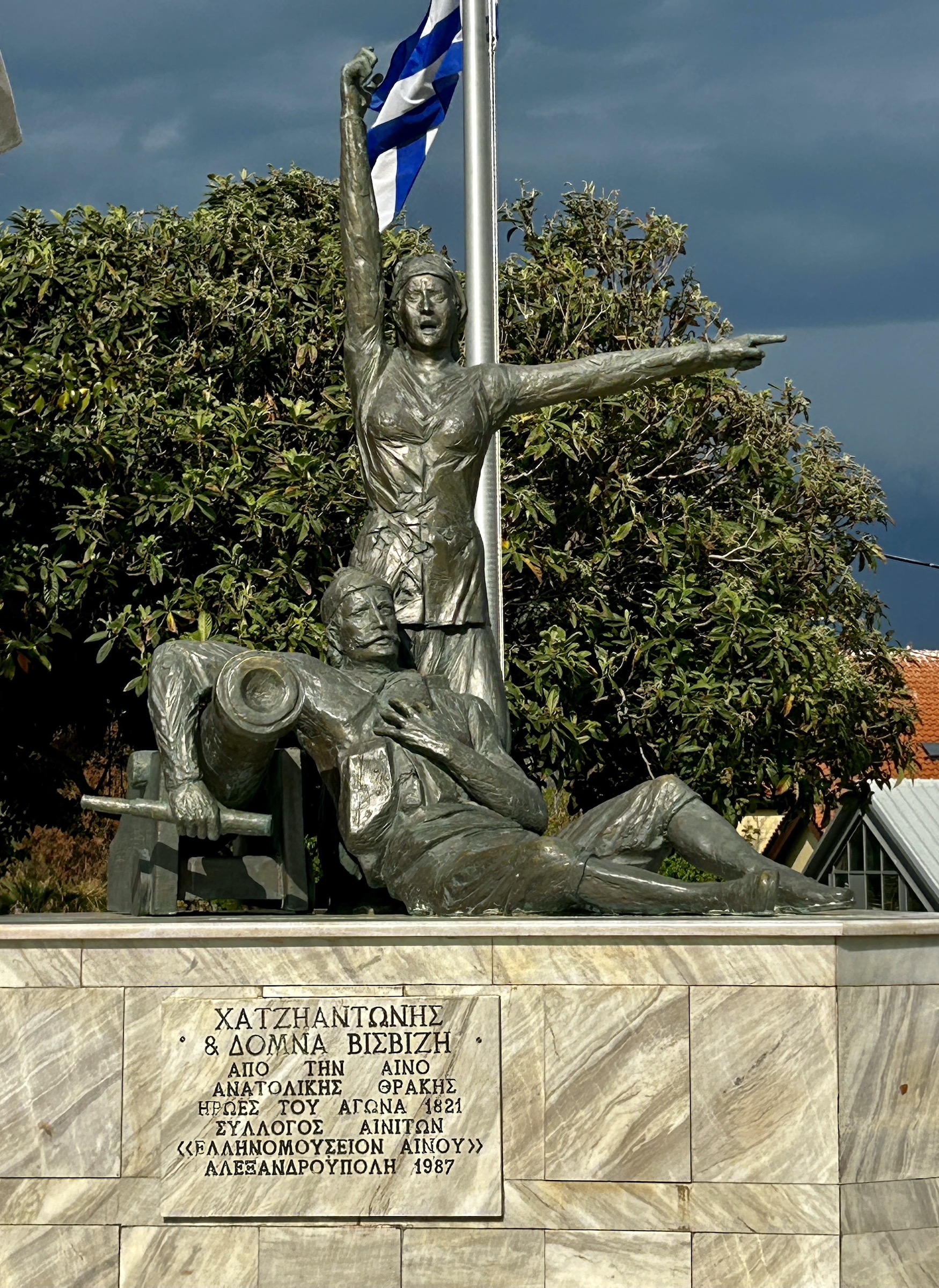
Here is another statue to Domna in Alexandroupoli; the determined star is remarkably like that of another famous Greek female admiral statue, Bouboulina which you can find on the island of Spetses.
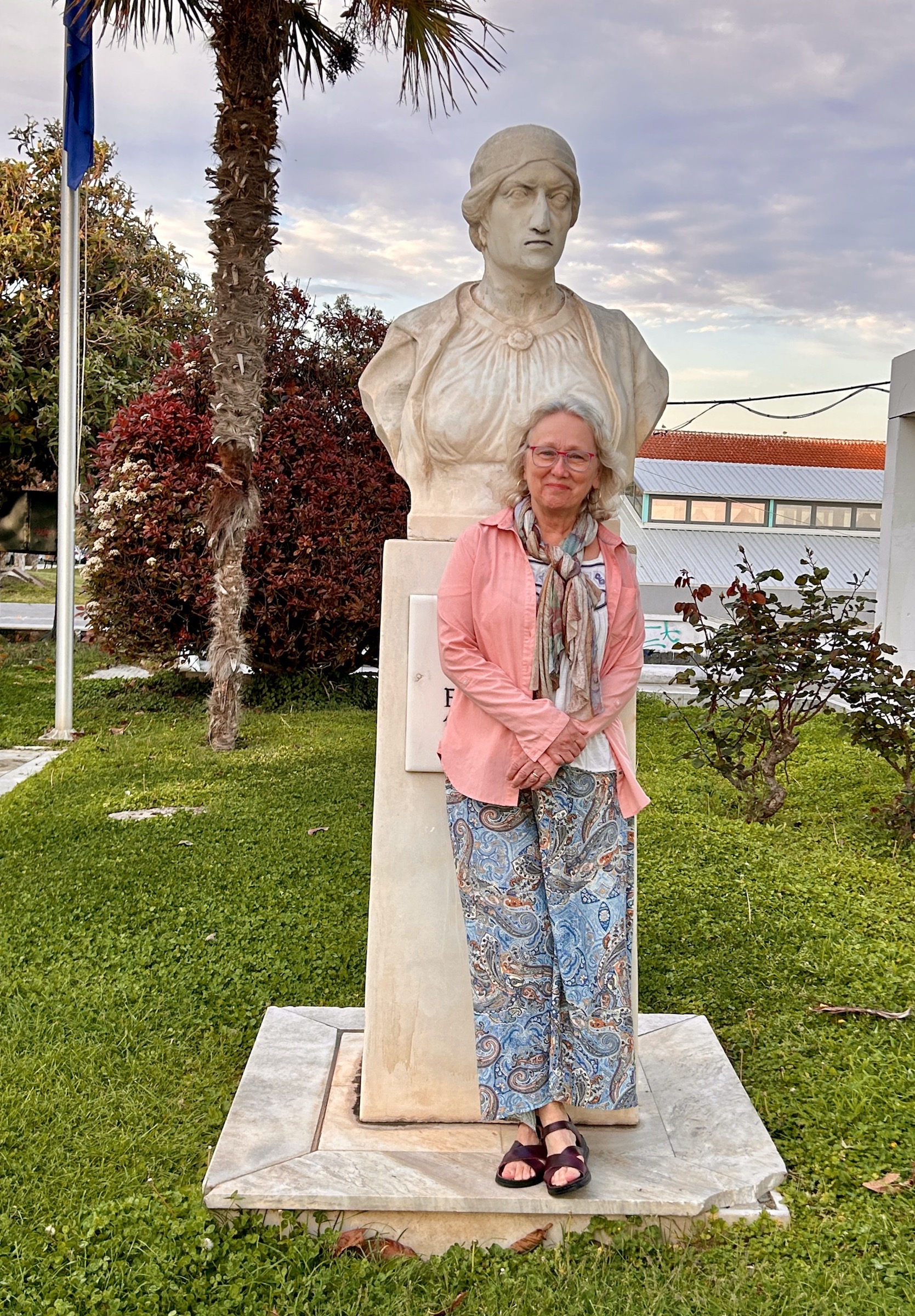
We now headed for a very nice seafood dinner at a waterfront restaurant where I got my first taste of Vergina Beer which features Thracian malt. What started out as a somewhat precarious day turned into a perfect evening.
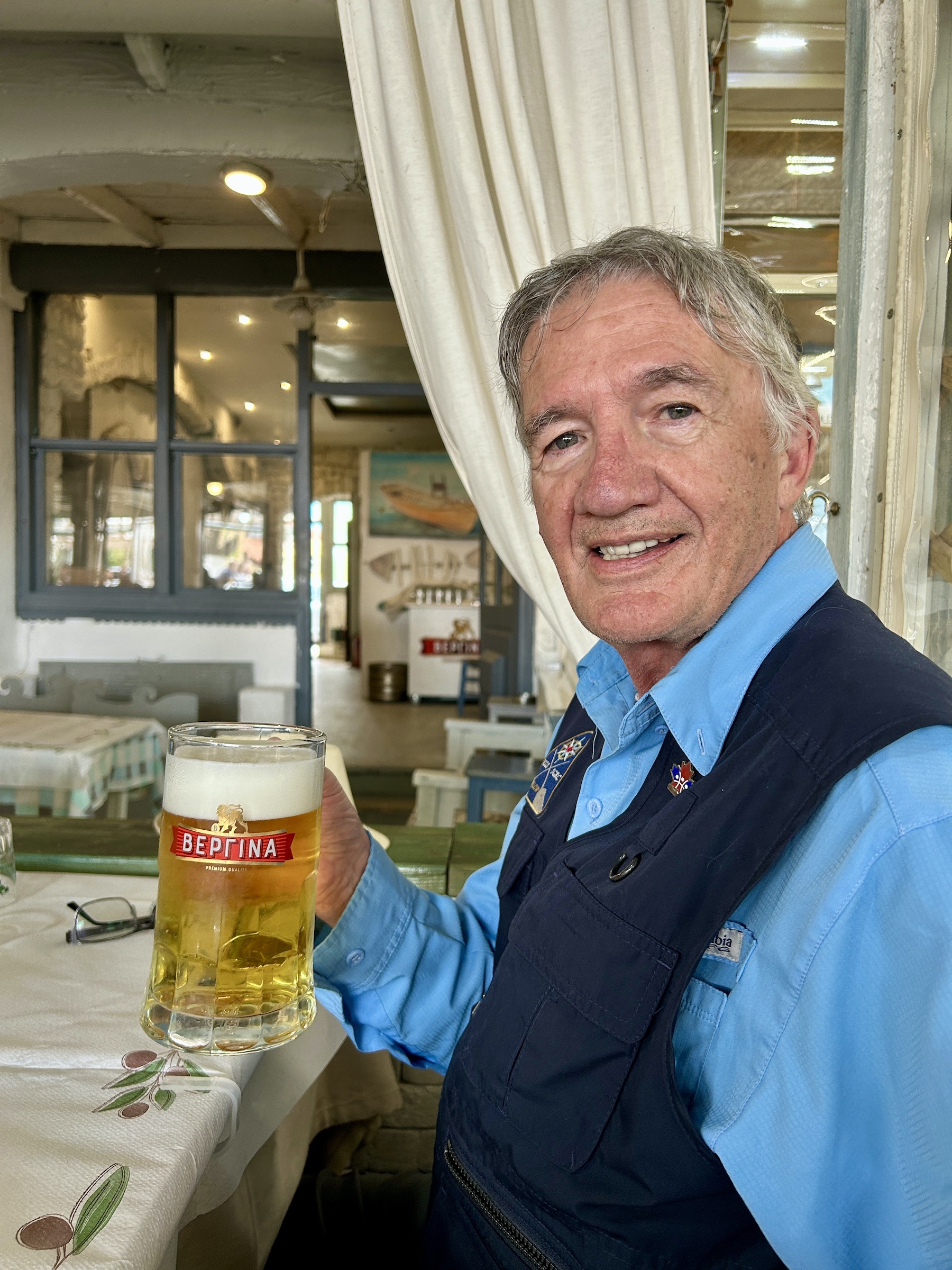
In the next two posts we’ll visit two areas that have been dramatically affect by tragic events since our visit there in April 2023. See what we saw and learn how things have changed since then.
Good night from Alexandroupoli.

